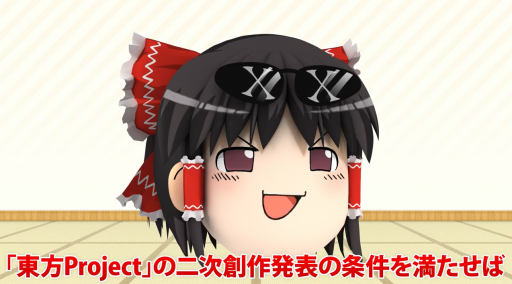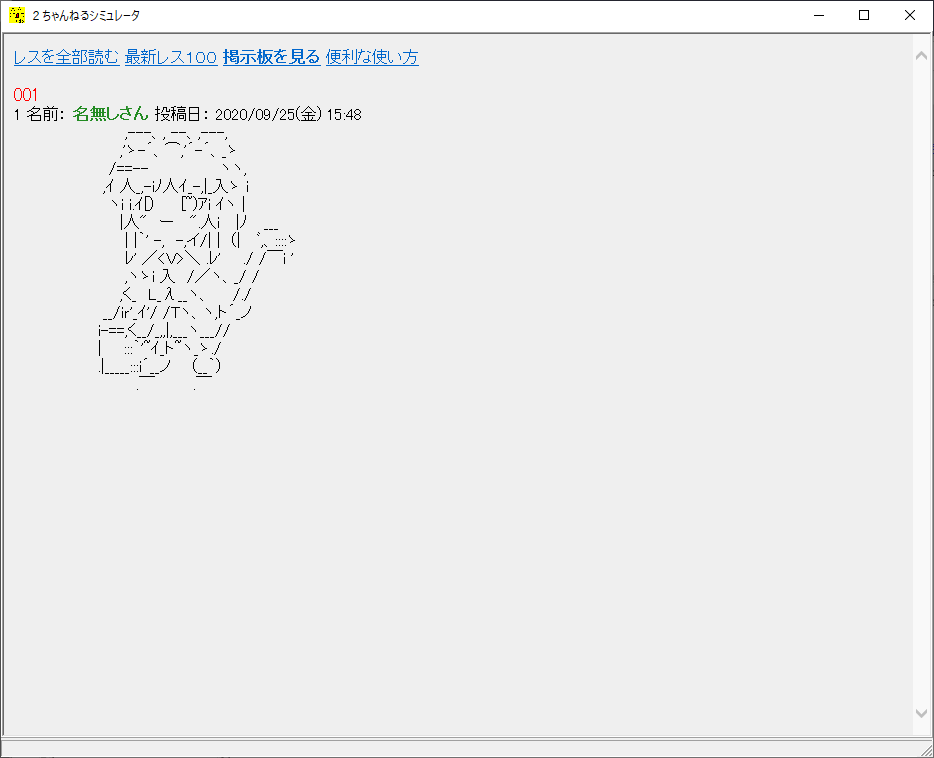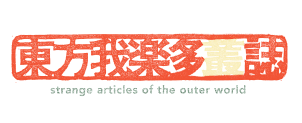We asked ASCII artist D-p Takezaki about the origin of yukkuris!
We asked ASCII artist D-p Takezaki about the origin of yukkuris!

Mysterious Sponsor X recently released an in-depth explanation video about the history and usage guidelines of yukkuris.
[Translator’s note: Yukkuri refers to specific stylized drawings of Reimu and Marisa, often accompanied by the caption “yukkuri shiteitte ne!”, meaning “take it easy!”.]
The characters known as yukkuris have amassed popularity even outside of the Touhou fandom. Mysterious Sponsor X’s video starts at the very basics with their origins as Touhou fanart, then addresses the environment they were created in, as well as the tricky issue of usage rights. And–

We made an incredible discovery!

Sponsor X:
Are these free for anyone to use?
D-p:
Yes, that’s fine.
Maso:
Please use them!
ZUN:
I don’t see why not.

Comment from Maso:
Determining who is allowed to use yukkuris was an extremely complicated case, because of the numerous people involved in their creation and popularization. We hope that this will help the community of yukkuri fans and their fan content to expand even more.
Finally, to clear up any confusion,

yukkuris are officially free for anyone to use!

As long as you follow the guidelines for Touhou Project derivative works

while making “yukkuri shiteitte ne!” fanworks,

anyone is free to create whatever they like!
Apparently it was less complicated than it appeared–anyone can use yukkuri characters as long as they adhere to the Touhou Project guidelines for derivative works!
Guidelines for Touhou Project Fan Creators – Touhou Yomoyama News
In light of ths, we sat down with ASCII artist D-p Takezaki, who was involved in the creation of yukkuris, to discuss how they evolved into the form we know and love today. During the process, we uncovered the root of what makes these derivative works of derivative works so special.
An interview about yukkuris with D-p Takezaki
D-p Takezaki: Also works under the pen names “Fukai” and “Fukaiton”. Hobbies include drawing, making ASCII art, playing video games, and attempting to cook. Recently set up a fish tank.
D-p Takezaki works as a graphics artist at a video game company.
https://www.pixiv.net/users/
7335954
https://twitter.com/fukaiton
— Please tell us a little about the circumstances around allowing the free use of “yukkuris”, drawings of Touhou characters that began as ASCII art.
D-p Takezaki:
I originally made ASCII art of Reimu and Marisa, but I wasn’t the one who combined them with different ASCII art or added the “Take it easy!” (“yukkuri shiteitte ne!”) phrase.
Yukkuris were assembled piece by piece through changes made by many different people, so I don’t think of them as something that I made myself.
ASCII art was originally meant to be copied and pasted all over on message boards. I don’t think that I can or should take a piece of that and put limitations on how it’s shared.
— I want to hear more about where this ASCII art came from, but first, could you tell us a little about the culture of 2chan at the time? Do you remember when you first started making ASCII art there?
[Translator’s note: 2channel, aka 2ch or 2chan, was an anonymous message board founded in 1999. Its massive user base and lack of moderation made it the birthplace of much of Japanese internet culture, as well as a frequent source of controversy.]
D-p Takezaki:
Actually, I started out on Futaba Channel, not 2channel.
[Futaba Channel: a message board created in 2001. It is most famous for “Nijiura”, an image board where countless now-famous memes and edits originated.]
Around the time Embodiment of Scarlet Devil had just come out, I started drawing the EoSD characters and posting them on Futaba Channel’s image board, starting with Reimu.

Someone from 2channel’s Touhou threads saw them and started sharing them there, and that’s when I started looking at 2channel.
The problem was that 2channel wasn’t an image board, so it was hard to share art there. I got the idea to start making ASCII art instead.
“Constantly remade into new forms” -- The evolution of yukkuris into their current form
— Do you remember the first ASCII art you made?
D-p Takezaki:
I don’t remember which one was the first, but I’m fairly certain that this Reimu was one of my earliest.

— How would you describe the culture of 2chan and ASCII art at the time?
D-p Takezaki:
Even back then, 2channel already had a reputation as something of a lawless place. To be honest, the first time I posted there, I was almost too scared to hit the post button. (laughs) But there was an unspoken code of sorts among the users there, so it wasn’t really as lawless as it was made out to be.
It was very uninhibited, for better or for worse.
The nice thing about ASCII art is that, because it’s made up of text characters, it’s fairly easy for anyone to take an existing piece and edit it without special tools or programs. You would see a lot of ASCII art that was assembled with parts from other ASCII art, or used existing art and put a new caption on it, and it was always fun to see how it would evolve as it spread.
I think the way ASCII art was constantly being remade into new forms is how yukkuris were able to emerge in the first place.
— Tell us about where the yukkuri ASCII art sprung from.
D-p Takezaki:
Well, like I said before, it started out as something different from the yukkuris you see now.
1. It started with a simple drawing of Reimu standing.

2. Later, a user edited the ASCII art so she was holding knives, which was called “ke-hee-hee Reimu”

3. Then another ASCII art appeared that was just ke-hee-hee Reimu’s head.

4. I thought seeing Reimu just as a head was funny, so I tried making it rounder, which resulted in the “manju Reimu”. The phrase “Care to join me for a snack?” was used with a lot of ASCII art, and I liked it, so I kept it.

Date unknown, around 2005?
5. About 2 years after that, I made a doujin manga entirely composed of ASCII art. Unfortunately I no longer have the manuscript, but one of the pieces in it became the basis for yukkuri Marisa. I posted it in one of the Touhou threads on 2chan as well.

SFX: (pointing forcefully)
Marisa: What kind of weird stuff are you into?!
Alice: It’s just for my research on autonomous dolls…
I don’t really know when or how those two images were combined.
So even though I posted both of the pieces that were put together to make yukkuris, I wasn’t actually involved in the creation of the yukkuris themselves.
— How do you feel about yukkuris’ explosive popularity, such as their use in the “yukkuri jikkyo” videos that I’ve heard are popular with elementary- and middle-school aged girls?
[Translator’s note: In “yukkuri jikkyo” videos, Youtubers use text-to-speech to add narration to a video and use a yukkuri as the “narrator”, VTuber style. They often feature gameplay of video games, like English-language “let’s play” videos.]
D-p Takezaki:
I think it’s great that they’ve transcended ASCII art and taken on a life of their own. In fact, I think a lot of the kids who watch those videos might not even know what ASCII art is.
I feel like I’m just an observer now like everyone else.
There’s something strangely cute about their smug yet likable expressions and their monotone voices.
I don’t want to sound arrogant, but I do feel a sense of pride at how far they’ve come. Like a parent looking at their children.
Come to think of it, since it’s been more than ten years since the ASCII art, the kids watching those videos now are about the same age as the yukkuris themselves.
— And finally, do you have a message for all the yukkuri fans out there?
D-p Takezaki:
At this point I’m just a fan like anyone else, so There’s only one thing I can say:
Keep on taking it easy!
We asked ASCII artist D-p Takezaki about the origin of yukkuris! End



